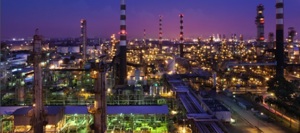Asia refiners snap up cheap light oil to reap higher fuel profits
SINGAPORE/SEOUL (Reuters) -- As the cost of light crude drops, some refiners in Asia are snapping up cargoes of the oil that is easier and cheaper to process than their usual diet of heavy crude, chasing profits from making diesel and gasoline.
As a result of the OPEC production cuts, the world's oil supply has become more light and those oil types yield more diesel and gasoline, the fuels that command the highest margins, when processed in a crude distillation unit, the most basic unit a refinery uses to make fuels.
Since purchasing the lighter oil makes it easier to extract diesel and gasoline, Asian refiners have jumped on the crude supply trend by buying light oil from Russia, Africa and even from as far as the United States to bolster their profits.
"Korean buyers are buying light crude because its price competitiveness is improving," a local South Korean refining source said on the condition of anonymity as he was not authorized to talk publicly about trading.
"Light crude used to be pricey and now as it's oversupplied, it's great for refiners. We can buy it at cheaper prices, save costs and produce more high value-added products like light naphtha and gasoline. We're hoping this trend will continue."
South Korean refiner Hyundai Oilbank bought Sakhalin Blend crude for April and May, several market traders said, using the light oil to blend with its typically heavy crude slate. Taiwanese refiner CPC added up to two more light oil cargoes in the second quarter and bought Algeria's Saharan Blend to partly replace heavier Angolan oil and for processing at its new splitter, said a company spokesman.
Meanwhile, Thai Oil bought Sakhalin Blend and US Eagle Ford crude for the first time ever in the second quarter, while Thailand's PTT also bought the Russian grade.
Refiners typically measure the relative difference between light and heavy oil grades by looking at the premium of Arab Light crude from Saudi Arabia to Arab Heavy. That spread is at $2.45 a barrel in April, according to the latest official selling prices the country has released, the narrowest in seven months.
The production cuts by the Organization of the Petroleum Exporting Countries (OPEC) mainly reduced the supply of medium heavy crude grades from the Middle East that yield more residual fuel oil that needs further and more costly upgrading into light transportation fuels.
‘NICE PROBLEM TO HAVE’
US production of light oil has stepped in to fill the gap from the OPEC cuts and Asian refiners are buying light grades they have stayed away from in the past.
US output, mainly of light oil, is up by 670,000 bpd since October, data from the Energy Information Administration showed, with traders are moving some of the lighter supply to Asia.
The turn to light crudes is a bit of a headache for many Asian refiners, who have spent millions of dollars installing cokers, crackers and other upgrading units that can process residual fuel oil into higher-value fuels.
"The world has gotten awfully light. It's a nice problem to have, but if you have a coker, the last thing you want is to have a stranded asset," said Jamie Webster, a fellow at Columbia University's Center on Global Energy Policy.
Reporting by Florence Tan in SINGAPORE and Jane Chung in SEOUL; Additional reporting by Osamu Tsukimori in TOKYO; Editing by Christian Schmollinger







Comments